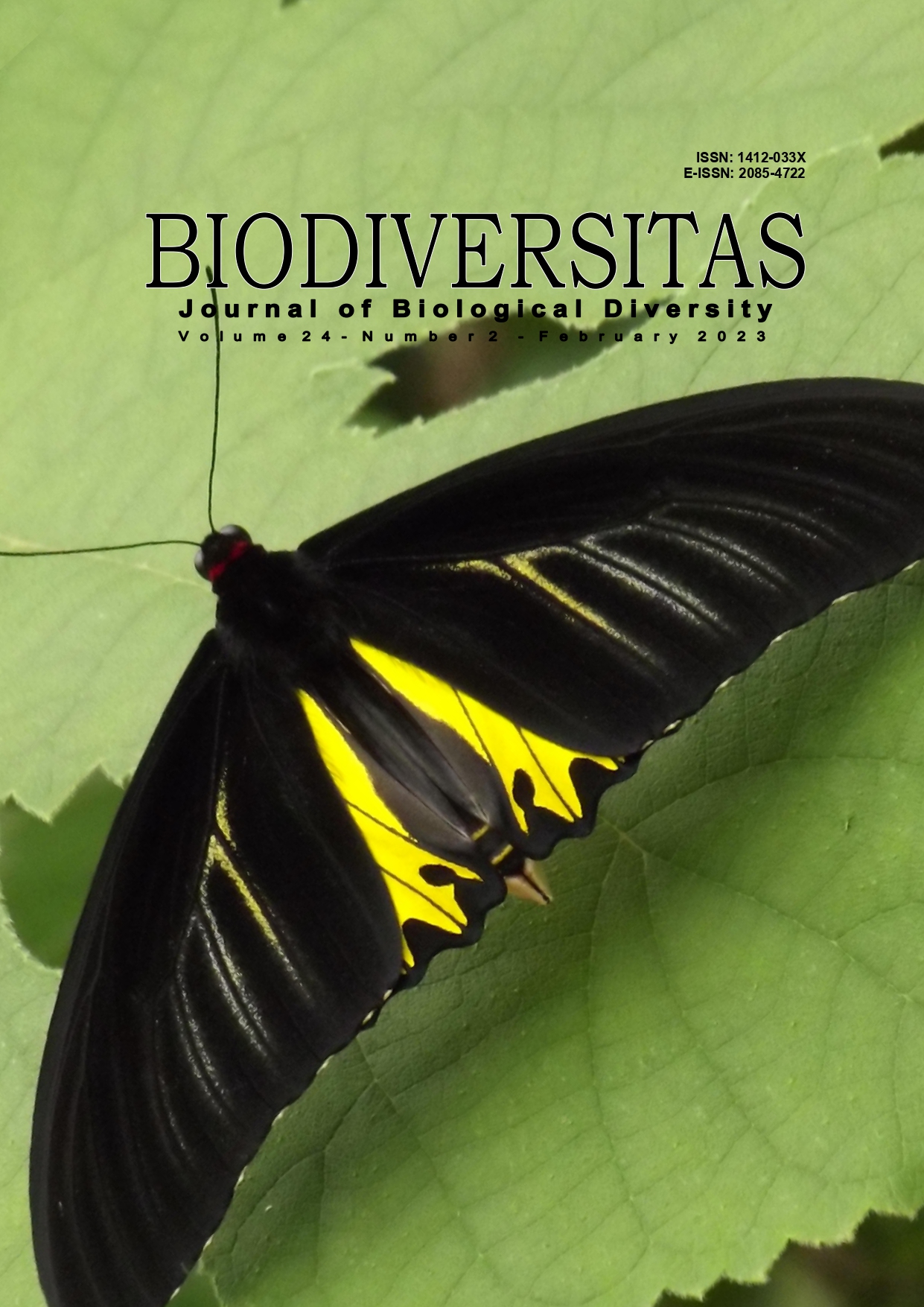Short communication: Macrofungi assemblage in Rawa Bento Forest, Kerinci Seblat National Park, Indonesia
##plugins.themes.bootstrap3.article.main##
Abstract
Abstract. Sayuti I, Zulfarina, Rahayu Z. 2023. Short communication: Macrofungi assemblage in Rawa Bento Forest, Kerinci Seblat National Park, Indonesia. Biodiversitas 24: 1224-1230. This study deals with macrofungi in the peat swamp forest of Rawa Bento, Kerinci Seblat National Park, Indonesia and their utilization. The forest region is dominated by banto grass or swamp rice grass (Leersia hexandra) with high humidity and rainfall which favors macrofungi growth and fruiting body formation. Furthermore, the sampling sites were chosen based on the accessibility of the area and the conditions for occurrence of macrofungi. About 36 macrofungi species were documented from 29 genera and 20 families, where 33 species belonged to Basidiomycota and only 2 species were Ascomycota. The dominant fungal group in the forest region was the Polypores and wood-inhabiting macrofungi. Eleven species were recognized as edible including Auricularia auricula-judae, Cantharellus subalbidus, Cookeina tricholoma, Dacryopinax spathularia, Galiella rufa, Ganoderma lucidum, Pleurotus cornucopiae, Pluteus fenzlii, Lentinus arcularius, Psilocybe cubensis, and Schizophyllum commune. Based on the scientific evidence, the majority of macrofungal species have medicinal properties except Pluteus fenzlii. The result provided preliminary information regarding use of macrofungi by the surrounding population, as well as knowledge development for researchers in the food and medical fields.
##plugins.themes.bootstrap3.article.details##
Most read articles by the same author(s)
- RAHMAN KARNILA, BUSTARI HASAN, DIAN IRIANI, HARIFA SYAH PUTRA, MUHAMMAD FAUZI, ZULFARINA, Preparation and characterization of chitosan derived from slipper lobster (Thenus orientalis) , Biodiversitas Journal of Biological Diversity: Vol. 25 No. 11 (2024)

